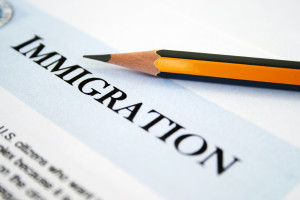 “What do the American people want immigration to do for the United States”[1]? According to George Borjas, one of the leading labor economists who specialize in immigration issues, this should be the fundamental question in the modern immigration debate. Technically, everyone who now lives in the United States has some ancestor that immigrated to the United States from abroad and there was a point in time where there was no immigration policy. As the United States became wealthier and wealthier, an immigration policy became necessary to keep overpopulation and major wealth divisions from happening. Typically, when policy makers of the world focus on the immigration debate, they seem to use economics as their main basis for policy change. This is how immigration policy is implemented in most countries. If immigration were to make the native people economically worse off, why wouldn’t a country impose a strict immigration policy? On the other hand, if immigration were to make the native population economically better off, why wouldn’t a country impose a more lose immigration policy? This paper will describe the political forces in Canada and the United States that led to their different historic approaches to immigration, and then analyze their respective current policies in both political and economic terms.
“What do the American people want immigration to do for the United States”[1]? According to George Borjas, one of the leading labor economists who specialize in immigration issues, this should be the fundamental question in the modern immigration debate. Technically, everyone who now lives in the United States has some ancestor that immigrated to the United States from abroad and there was a point in time where there was no immigration policy. As the United States became wealthier and wealthier, an immigration policy became necessary to keep overpopulation and major wealth divisions from happening. Typically, when policy makers of the world focus on the immigration debate, they seem to use economics as their main basis for policy change. This is how immigration policy is implemented in most countries. If immigration were to make the native people economically worse off, why wouldn’t a country impose a strict immigration policy? On the other hand, if immigration were to make the native population economically better off, why wouldn’t a country impose a more lose immigration policy? This paper will describe the political forces in Canada and the United States that led to their different historic approaches to immigration, and then analyze their respective current policies in both political and economic terms.
The United States is a nation of immigrants. During the colonial era, from 1607 to 1820, a little less than one million people arrived and settled in the United States which comprised of about 600,000 Europeans, about 300,000 African slaves, and a small mix of Scots, Irish, Dutch, Germans, Swedes, and French.[2] This was considered the first wave of immigration to the United States. The second wave occurred from the years between 1840 and 1870 where about 15 million immigrants entered the country. Most of the immigrants came from Ireland (because of the Irish Potato Famine) and Germany while some Spanish speakers were coming through the southwest region and Chinese laborers were coming to California (because of the California gold rush).[3] The third wave of immigration, during the years between 1880 and 1920, was really when immigration opposition began and the need for an immigration policy became apparent. During the third wave, there were about 25 million immigrants. Most came in from England, Ireland, and Germany; but this time around, there was an abundance of immigrants coming in from southern and eastern Europe: Italy, Poland, Greece, Russia, Hungry, and other smaller nations.[4] Immigration public policy was marginally discussed by the mid-19th century. There were minimal attempts to keep criminals and other extreme undesirables out, but other than that, immigration did not affect people’s lives enough for there to be public discussion about it.
[1]George J Borjas, Heaven’s Door: Immigration Policy and the American Economy (Princeton, NJ: Princeton UP, 1999) xvi.
[2] John Isbister, The Immigration Debate: Remaking America (West Hartford, CT: Kumarian, 1996)32.
[3] Isbister 32.
[4] Isbister 32.